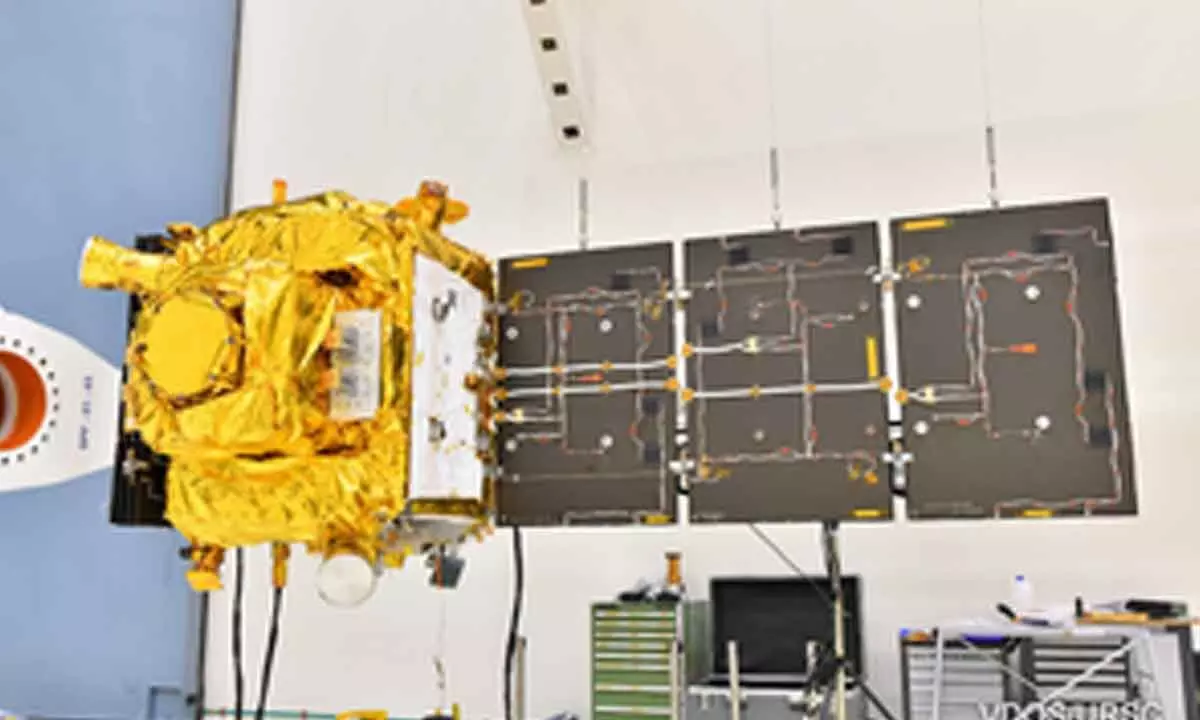PSLV rocket lifts off XPoSat
This is the first space mission for ISRO on January 1
image for illustrative purpose

ISRO’s Scientific Satellite
- ISRO has 5 types of PSLV rockets - Standard, Core Alone, XL, DL, and QL
- PSLV uses 6,4,2 solid rocket strap-on motors to augment the thrust
- XPoSat is the first dedicated scientific satellite from the ISRO
Sriharikota: On the first day of the calendar year 2024, India's Polar Sate:lite Launch Vehicle-C58 (PSLV-C58) on Monday morning lifted off with the country's X-ray Polarimeter Satellite (XPoSat) with 10 other payloads.
The 44.4-metre tall PSLV-C58 rocket with a lift off mass of 260 ton carrying XPoSat and 10 other experimental payloads on its fourth stage blasted off from the first launch pad at the Satish Dhawan Space Centre (SDSC) here at 9.10 a.m.
Slowly rising up towards the skies with a thick orange flame at its tail, the rocket gained speed with a sound resembling rolling thunder and went up and up leaving a thick plume while the people assembled at the viewing gallery clapped their hands with pride.
Interestingly, this is the first space mission for ISRO on January 1 for the Indian Space Research Organisation (ISRO).
At about 21 minutes into its flight, the rocket will orbit XPoSat at an altitude of about 650 km.
Subsequently, the rocket's fourth stage will be restarted twice to reduce the orbit into a 350 km circular orbit to maintain in 3-axis stabilised mode for Orbital Platform (OP) experiments.
The PSLV Orbital Experimental Module-3 (POEM-3) experiment will be executed, meeting the objective of 10 identified payloads, supplied by the ISRO and the Indian National Space Promotion and Authorisation Centre (IN-SPACe), the Indian space agency said.
In its normal configuration, the PSLV is a four-stage/engine expendable rocket powered by solid and liquid fuels, alternatively, with six booster motors strapped onto the first stage to give higher thrust during the initial flight moments.
The ISRO has five types of PSLV rockets -- Standard, Core Alone, XL, DL, and QL.
The major difference between them is the use of strap-on boosters which, in turn, largely depends on the weight of the satellites to be orbited.
The PSLV uses 6,4,2 solid rocket strap-on motors to augment the thrust provided by the first stage in PSLV-XL, QL & DL variants, respectively. However, strap-ons are not used in the core-alone version (PSLV-CA).
The XPoSat is the first dedicated scientific satellite from the ISRO to carry out research in space-based polarisation measurements of X-ray emission from celestial sources. The satellite configuration is modified from the IMS-2 bus platform.
The configuration of the mainframe systems is derived based on the heritage of IRS satellites. It carries two payloads, namely POLIX (Polarimeter Instrument in X-rays) and XSPECT (X-ray Spectroscopy and Timing).

